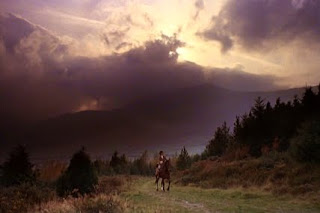 Kubrick is one of the greatest directors that the film industry has ever had. He lived between 1928-1999 and made 13 feature films in his movie directing career.
Kubrick is one of the greatest directors that the film industry has ever had. He lived between 1928-1999 and made 13 feature films in his movie directing career. Kubrick started his career as a freelance photojournalist at the age of 17, at the highly influential American magazine Look (it doesn't exist anymore) and sold hundreds of photos to the magazine. Fascinated with the color of vision, five years later he shot his first documentary; and cinema became his new passion.
Kubrick started his career as a freelance photojournalist at the age of 17, at the highly influential American magazine Look (it doesn't exist anymore) and sold hundreds of photos to the magazine. Fascinated with the color of vision, five years later he shot his first documentary; and cinema became his new passion.As a former photographer, soon his movies grabbed the attention of the audience with their visual characteristics. Kubrick was signing his films with his photographic acuity. Precisely calculated camera movements, wide angle shots, meticulous attention to details, facial closeups and long pull-backs are the trademarks of his cinematography. Technically self-educated with his photography background, he is very famous for being a perfectionist director. He demands hundred of retakes of certain scenes until he approves it. However, his slow method of working leads him to make the cult movies of the movie history.
His filmography includes anti-war movies ('Paths of Glory', 'Dr. Strangelove or: How I Learned to Stop Worrying and Love the Bomb', 'Full Metal Jacket'), a science-fiction movie '2001: A Space Odyssey' and the movies with the controversial themes of the time ('Lolita', 'A Clock Work Orange', 'Eyes Wide Shut'). Stories are mostly adapted from novels. Later, before his death, he wants to make an Artifical Intelligence movie with Steven Spielberg. However, the movie was left as a project after several brainstormings with Spielberg. After his death, Spielberg made "A.I. Artificial Intelligence" using Kubrick's notes and drafts. (Barry Lyndon)
(Barry Lyndon) For me, Stanley Kubrick is a very special director. I was fascinated by Barry Lyndon seeing Kubrick's intelligence, sense and efforts on the visual side of the movie. The movie was shot in beautiful landscapes of Ireland by using only daylight. You can see that the scenes are nourished with a photographic (period) painting in his hands. Kubrick talks to audience through a visual aesthetics in Barry Lyndon.
 Kubrick was one of the greatest talents in film industry and he inspired several directors. He dedicated himself to every aspect of film production. From editing to costumes, screenplay to mise-en-scène, he was taking care of his movies as if he was taking care of his kids.
Kubrick was one of the greatest talents in film industry and he inspired several directors. He dedicated himself to every aspect of film production. From editing to costumes, screenplay to mise-en-scène, he was taking care of his movies as if he was taking care of his kids.I want to suggest you my favorite Kubricks: Full Metal Jacket (at the top of my list), Barry Lyndon (a masterpiece), 2001: A Space Odyssey (a masterpiece), Eyes Wide Shut (a perfectionist photographic film) and Dr. Strangelove (I love the script).
You can also find my Full Metal Jacket review here.
Have fun!








